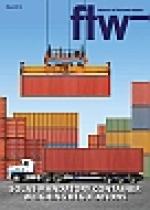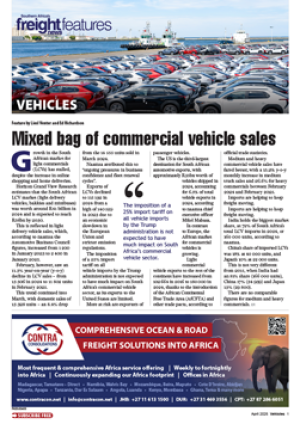The implications of noncompliance
are forcing
shippers to pay careful
attention to the new Solas
regulations.
“There’s nothing new about
shippers having to declare the
mass of their cargo,” says Peter
Lamb, senior associate with
Norton Rose Fulbright.
“What is new is that method
2 needs the verified gross mass
(VGM) of the container to be
determined by a weighing
process which is certified by the
SA Maritime Safety Authority
(Samsa) – and under Solas a
shipowner cannot load that
container on board unless the
weight is verified.”
This means that if the
shipowner wants to maintain
his insurance he must comply
with this guideline, says Lamb.
“Enforcement of the guidelines
is not only dependent on the
Department of Transport.
When the container arrives at
the port the shipowner will
instruct the master not to load
the container if it doesn’t have
a VGM – which will cause
major problems for the cargo
interest.”
In addition, general cargo
marine insurance does not
cover delays, so if there’s
damage to a container of
perishables due to a delay
caused by a weight-related
issue this is not covered under
institute cargo clauses, he adds.
And while there is talk
about the Americans delaying
the implementation of the
guidelines for a year –
which they can do if they
notify the IMO – practically
speaking this will only apply to
American-flagged vessels and
possible in American ports.
“Implementation of these
guidelines will come through
the flag state – and if that flag
state says that the shipowner
must comply then it will apply
in American ports despite what
the local authorities say.”
In Lamb’s view, one of
the reasons the guidelines
have caused a great deal of
confusion is because the IMO
traditionally thinks of ships on
the sea. “This is the first time it
has digressed to regulate cargo
interests in this manner,” he
says.
“The problem is that the IMO
appears to have misunderstood
the logistics and manufacturing
processes which is why method
2 is causing misunderstanding.
Lamb says the regulations
– which appear on the Samsa
website – are drafted in plain
and simple language. “But the
industry needs guidance from
roleplayers Transnet and Samsa.
“For example there is an
exception to method 2 if the
shipper is dealing with an
originally sealed package on
which the accurate mass of
the packaging and the cargo
items is clearly and permanently
marked on its surface. In that
instance he doesn’t have to
comply with method 2.”
The question that arises in
that situation, says Lamb, is
whether there is a certified
process for the initial
determination of the accurate
weight. “And in order for
Samsa to answer
that they need to understand
the manufacturing process.
The cargo interests have not
been adequately consulted
yet they need to comply with
this process.”
What’s important to note is
that the definition of a shipper
is fairly broad, says Lamb. “If
the freight forwarder is the one
signing the bill of lading he is
the shipper for purposes of
these guidelines.”
INSERT & CAPTION
If the shipowner
wants to maintain his
insurance he must comply
with this guideline.
Peter Lamb
Insurance depends on compliance
01 Jun 2016 - by Joy Orlek
0 Comments
FTW - Solas - Booklet - 2016

01 Jun 2016
01 Jun 2016
01 Jun 2016
01 Jun 2016
01 Jun 2016
01 Jun 2016
01 Jun 2016
01 Jun 2016
01 Jun 2016
01 Jun 2016
Border Beat
Featured Jobs
New
New
